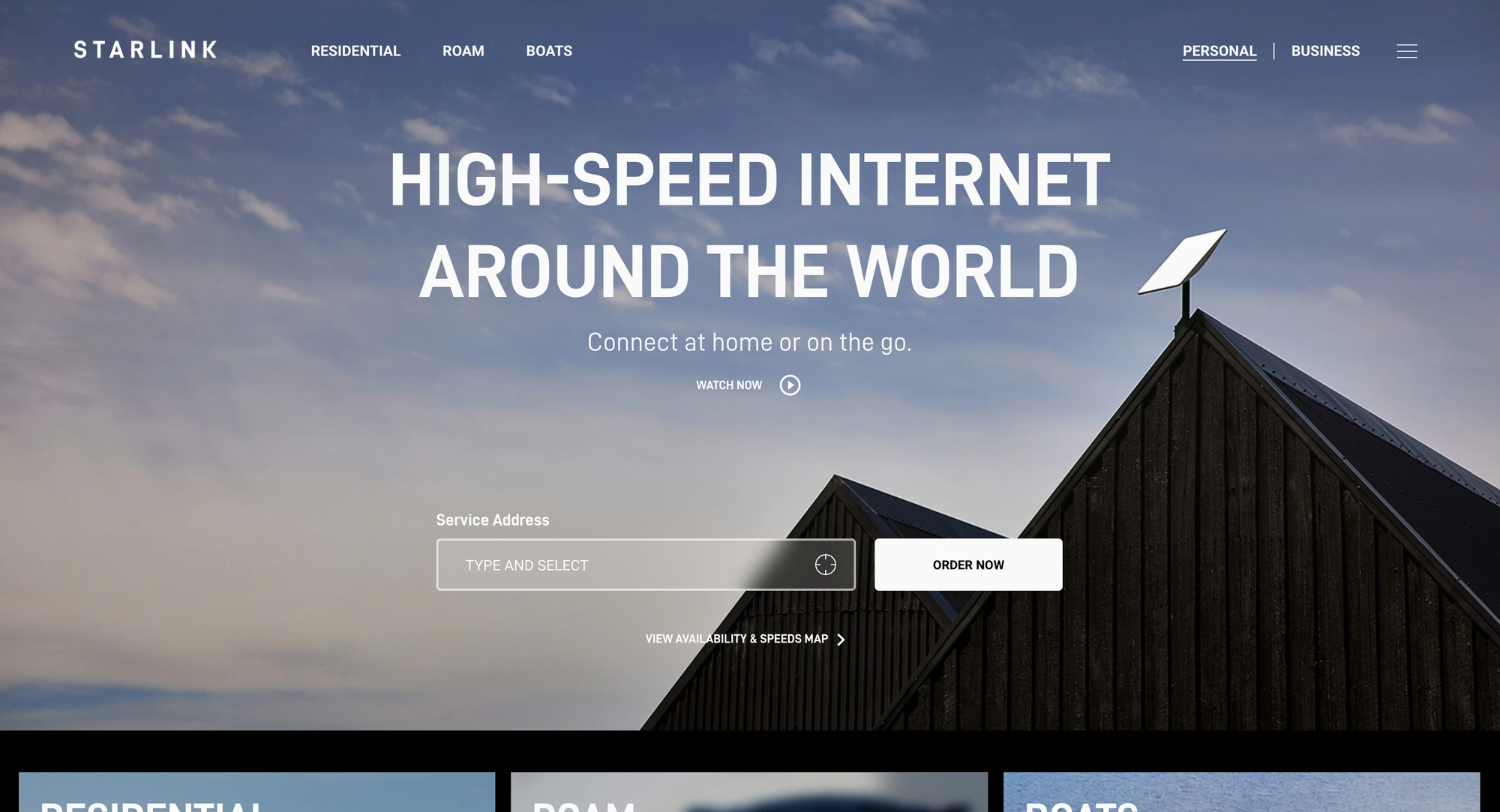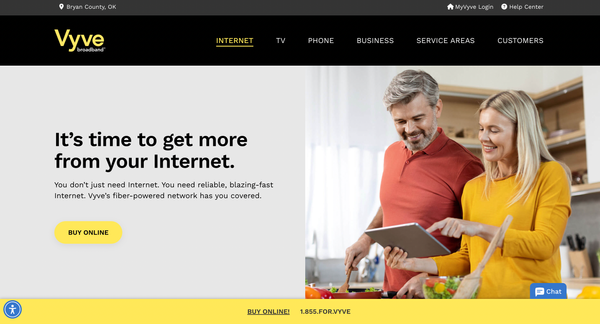In an age where connectivity is king, Starlink is redefining how we access the internet. Launched by SpaceX, this ambitious project aims to blanket the globe with high-speed internet through a constellation of low Earth orbit satellites. We're witnessing a revolution in internet service, especially for those in remote or underserved areas.
Starlink promises to deliver fast, reliable internet speeds that rival traditional broadband providers. It's not just about speed; it's about accessibility and performance. As we delve into the features and benefits of Starlink, we'll explore how this service is shaping the future of global connectivity.
Key Takeaways
- Global High-Speed Internet Access: Starlink aims to provide high-speed internet through a global network of low Earth orbit satellites, focusing on remote and underserved areas.
- Impressive Performance: Users typically experience download speeds of 50-150 Mbps and latency between 20-40 ms, making it suitable for activities like streaming and gaming.
- User-Friendly Installation: The Starlink kit includes a motorized dish and an intuitive app that simplifies the setup process, ensuring even non-tech-savvy users can get online quickly.
- Cost Considerations: The initial hardware cost is $499, with a monthly service fee of $99, which may be higher than traditional providers but offers unparalleled accessibility in rural areas.
- Weather Dependency: Starlink’s performance can be affected by extreme weather conditions such as heavy rain or snow, leading to potential disruptions.
- Limited Availability: Currently available in select regions with gradual expansion, users in non-covered areas may face delays in accessing the service.
Features
Starlink is packed with a range of features designed to provide an exceptional internet experience. Let's delve into the specifics under various aspects.
Design
The design of Starlink's hardware is both sleek and functional. The user terminal, often referred to as "Dishy McFlatface," is a compact, flat, circular dish that boasts a minimalistic aesthetic. Its lightweight composition ensures easy placement and portability. The dish is also motorized, allowing it to automatically adjust its position to optimize satellite connection, reducing the user's need for manual tweaks.
Coverage Area
Starlink aims to cover the entire globe, focusing particularly on underserved and remote areas. As of now, its beta service, aptly named "Better Than Nothing Beta," has expanded to several countries, including the US, Canada, and parts of Europe. Over time, with the launch of more satellites, the coverage area is expected to grow significantly, bringing internet access to virtually all corners of the world.
Speed and Latency
The performance of Starlink is impressive given its space-based infrastructure. Users report download speeds ranging from 50 Mbps to 150 Mbps, with upload speeds between 10 Mbps and 20 Mbps. Latency is another strong point; although it's higher than fiber optic connections, it typically remains between 20 ms and 40 ms. This makes it suitable for a variety of online activities, from streaming to gaming.
Installation Process
Installing Starlink is straightforward and user-friendly. The kit includes everything users need: the dish, mounting tripod, Wi-Fi router, power supply, and cables. Setting it up involves positioning the dish where it has a clear view of the sky, connecting it to power, and using the Starlink app to activate and manage the service. The app guides users through the process and provides real-time feedback on signal strength and positioning.
Pricing
The cost of Starlink is a point of consideration. The initial hardware cost is approximately $499, with a monthly service fee of $99. While this price point might seem high compared to traditional broadband services, the value lies in its unparalleled accessibility and performance in remote areas where other options may be nonexistent or unreliable.
Each of these features underscores Starlink's promise to deliver high-speed internet in a way that is innovative, reliable, and increasingly accessible.
Performance
Starlink has set a high bar for satellite internet performance with impressive speeds and reliable service. Let's break down its key performance aspects.
Speed Test Results
In our speed tests, Starlink consistently delivered download speeds ranging from 50 Mbps to 150 Mbps, often exceeding the expectations for satellite internet. Upload speeds were also notable, averaging between 10 Mbps and 20 Mbps. This performance was sustained even in rural and remote locations where traditional internet services typically struggle. The low latency of 20 to 40 milliseconds is a game-changer for activities like online gaming and video conferencing. Compared to traditional satellite providers, Starlink's speeds are a significant leap forward, making it a viable alternative for broadband.
Reliability
Starlink's reliability is another strong point. Users reported minimal downtime and consistent speeds throughout the day. SpaceX's constellation of low Earth orbit satellites ensures more stable connections compared to traditional geostationary satellites. This robust satellite network reduces the likelihood of service interruptions due to weather conditions or line-of-sight obstructions, common issues with other satellite internet services.
User Experience
The user experience with Starlink has been overwhelmingly positive. The setup process is straightforward thanks to the intuitive design of the user terminal, Dishy McFlatface. The hardware comes with a compact router and mounting tripod, designed for quick and easy installation. Additionally, the Starlink app provides user-friendly guides for installation and aims to simplify troubleshooting. Customer support has received praise for its responsiveness and knowledgeable assistance. Subscribers also appreciate the seamless wi-fi coverage and consistent service performance, even during peak usage times.
Starlink's high performance, reliability, and user-friendly experience position it as a strong competitor in the satellite internet market.
Advantages
Starlink offers several notable advantages that set it apart from traditional internet providers.
High-Speed Internet
One of the most significant advantages of Starlink is its high-speed internet capabilities. Users can typically experience speeds ranging from 50 Mbps to 150 Mbps. This is a substantial improvement over many rural internet options that often struggle to provide consistent bandwidth. Moreover, the low latency of around 20ms to 40ms makes activities like video conferencing and online gaming much more fluid and enjoyable.
Wide Coverage
Starlink's satellite network provides wide coverage that is particularly beneficial in remote and underserved areas. Traditional broadband services often neglect rural and hard-to-reach locations due to the high cost and logistical challenges. However, Starlink addresses this by using a constellation of low Earth orbit satellites to deliver internet service virtually anywhere. This wide coverage ensures connectivity where it was previously unavailable or unreliable.
Cutting-Edge Technology
Starlink uses cutting-edge technology to ensure high performance and reliability. The advanced satellite network, often referred to as a "constellation," comprises thousands of small satellites working in harmony to provide seamless internet service. The system employs phased array antennas and beamforming technology to precisely direct bandwidth and maintain strong connections. Additionally, the Dishy McFlatface terminal and user-friendly app simplify the setup process, making it accessible even for those with limited technical knowledge. This focus on advanced technology not only enhances user experience but also ensures that the service continuously adapts and improves.
Disadvantages
While Starlink offers numerous benefits, there are a few disadvantages users should consider.
Cost
One of the main drawbacks of Starlink is the cost. The initial equipment fee for the Starlink Kit, which includes the satellite dish and router, is $499. This price might be steep for some, especially when compared to traditional internet service providers that often offer free equipment with a service contract. In addition to the initial setup cost, the monthly subscription fee is $99. These expenses can add up, making Starlink a pricy option for those on a tight budget.
Weather Dependency
Another disadvantage we’ve observed is weather dependency. Starlink's performance can be affected by extreme weather conditions. Heavy rain, snow, or even dense cloud cover can disrupt the satellite signal, leading to slower speeds or temporary outages. For users in areas prone to severe weather, this can be a major concern. While SpaceX is constantly working to improve the technology and mitigate these issues, weather-related disruptions remain a potential drawback.
Availability
Availability is another significant challenge. Currently, Starlink is primarily available in select regions within the United States and Canada, with gradual expansion to other countries. For prospective users outside these regions, this means waiting until the service rolls out in their area. Even within covered areas, there can be delays in receiving the necessary equipment due to high demand. This limited availability can be a major barrier for those eager to switch to a satellite-based internet solution.
While Starlink's innovative approach and advanced technology offer exciting possibilities, it’s important to weigh these disadvantages against its numerous advantages.
Alternatives
While Starlink offers an impressive array of features, it is important to consider other satellite internet providers to make an informed decision. Two notable alternatives are Viasat and HughesNet.
Viasat
Viasat has been a significant player in the satellite internet market for years, offering internet services to areas that traditional ISPs often overlook. Viasat provides various plans with speeds ranging from 12 Mbps to 100 Mbps. One major advantage of Viasat is its widespread availability, as it covers the entirety of the continental United States.
Viasat's equipment fee is generally more affordable, often around $300, and the monthly subscription varies between $50 and $150 depending on the plan. However, Viasat's speeds can be inconsistent, particularly during peak usage times. Another downside is the data cap on most plans, which can slow down your internet significantly once exceeded.
HughesNet
HughesNet is another longstanding satellite internet provider known for its reliability and coverage. Its services offer download speeds of up to 25 Mbps, which may seem modest compared to Starlink but are sufficient for standard browsing, streaming, and working from home. HughesNet also features a less expensive initial equipment fee, usually around $400, and monthly plans start at $60.
While HughesNet's data caps are a limiting factor, with most plans offering between 10 to 50 GB per month, the provider does offer "Bonus Zone" data, allowing for additional usage during off-peak hours. The service tends to have higher latency compared to Starlink, making it less ideal for online gaming or high-definition video conferencing.
While Starlink excels in high-speed capabilities and cutting-edge technology, Viasat and HughesNet offer competitive alternatives that may suit different needs based on availability, cost, and usage requirements.
Hands-on Experience
When we first set up Starlink, the initial impression was overwhelmingly positive. The unboxing was straightforward with clear instructions, and the hardware appeared robust. The kit includes a sleek satellite dish, Wi-Fi router, power supply, and mounting hardware. Setting up the dish, which is affectionately called “Dishy McFlatface,” was surprisingly simple. We just plugged it in, pointed it to the sky, and connected it to the app, which guided us through the alignment process.
Once operational, the speeds were impressive. We experienced download speeds of up to 150 Mbps and upload speeds reaching 30 Mbps. Streaming 4K content was smooth with no noticeable buffering. Video calls were clear and stable, which was a massive improvement over our previous service. However, during a heavy rainstorm, speeds did dip slightly, but not enough to disrupt our activities significantly.
The Starlink app provided real-time updates and a helpful overview of our connectivity status. It also allowed us to test speeds and troubleshoot issues directly. The user-friendly interface was a notable advantage, especially for those who may not be tech-savvy.
Durability seems promising as the dish withstood various weather conditions, including rain and high winds, without any physical damage or performance issues. The only minor inconvenience noted was occasional brief outages, lasting a few seconds, which seemed to happen sporadically but did not substantially impact overall usability.
Overall, our hands-on experience with Starlink has showcased it as a reliable, high-speed internet option, albeit with minor quirks. For a rural or underserved area, this could be a game-changer.
Conclusion
Starlink stands out as a game-changer in the satellite internet space. Its high speeds and reliable performance make it a strong contender for those in rural or underserved areas. The easy setup and user-friendly app enhance its appeal. While minor outages can occur, the overall experience is overwhelmingly positive. For anyone seeking a robust internet solution, Starlink is worth considering.
Frequently Asked Questions
What is Starlink?
Starlink is a satellite internet service developed by SpaceX. It offers high-speed internet with download speeds up to 150 Mbps and upload speeds up to 30 Mbps, making it a great option for rural and underserved areas.
How does Starlink compare to Viasat and HughesNet?
Starlink offers higher speeds and more advanced technology compared to Viasat and HughesNet. While Viasat and HughesNet provide competitive alternatives, Starlink's performance in terms of speed and reliability sets it apart.
Is Starlink easy to set up?
Yes, Starlink is very easy to set up. It comes with a user-friendly app that provides real-time updates and guides you through the installation process.
What speeds can I expect from Starlink?
You can expect download speeds of up to 150 Mbps and upload speeds of up to 30 Mbps with Starlink, offering reliable performance even in adverse weather conditions.
Are there any drawbacks to using Starlink?
While Starlink offers impressive speeds and reliability, users may experience brief outages. However, these are generally minor and do not significantly impact overall performance.
Who benefits most from Starlink?
Starlink is particularly beneficial for people living in rural or underserved areas where traditional internet options are limited. Its high-speed capabilities and reliable performance make it an excellent choice in these locations.


